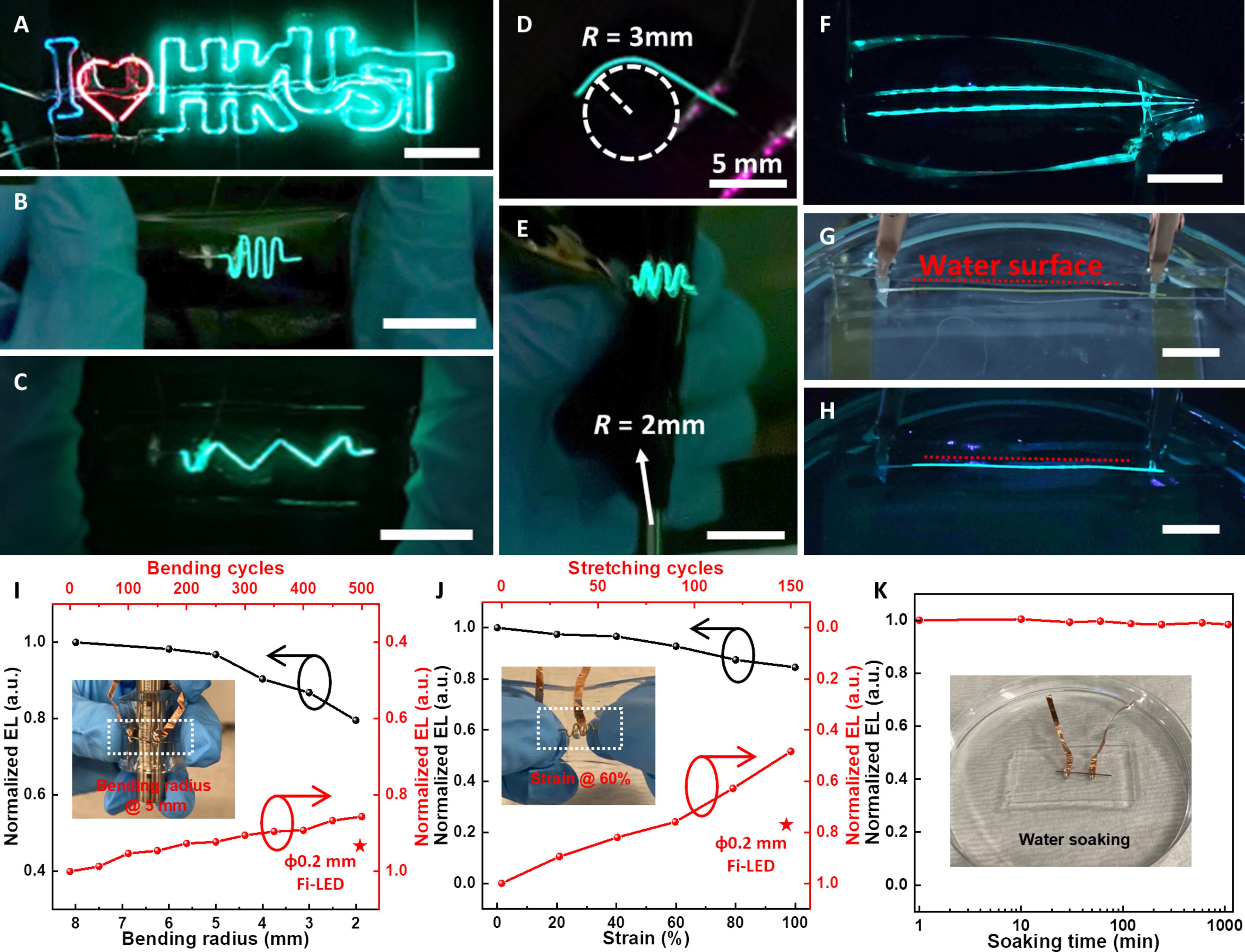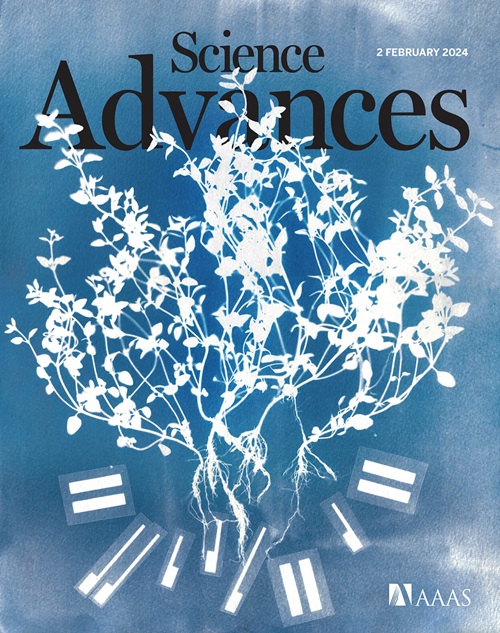基于包晶量子线的全彩光纤发光二极管。
IF 11.7
1区 综合性期刊
Q1 MULTIDISCIPLINARY SCIENCES
引用次数: 0
摘要
可用于可穿戴照明和显示设备的光纤发光二极管(Fi-LED)是光纤/纺织电子器件的关键组件之一。然而,在利用类纤维基底制造器件以及器件封装方面,还存在许多障碍需要克服。在这里,我们采用浸涂工艺在铝纤维表面填充高密度氧化铝纳米孔,从而均匀地生长出全无机包晶量子线阵列。通过两步蒸发法涂覆周围的传输层和半透明电极,我们成功地制造出了全色 Fi-LED,其发射峰值分别为 625 纳米(红色)、512 纳米(绿色)和 490 纳米(天蓝色)。有趣的是,附加的聚二甲基硅氧烷封装有助于增强 Fi-LED 的机械可弯曲性、可拉伸性和防水特性。铝纤维的可塑性还允许将一维结构的 Fi-LED 塑造和构建为二维甚至三维结构,为采用非传统外形的先进照明开辟了新的前景。本文章由计算机程序翻译,如有差异,请以英文原文为准。

Full-color fiber light-emitting diodes based on perovskite quantum wires
Fiber light-emitting diodes (Fi-LEDs), which can be used for wearable lighting and display devices, are one of the key components for fiber/textile electronics. However, there exist a number of impediments to overcome on device fabrication with fiber-like substrates, as well as on device encapsulations. Here, we uniformly grew all-inorganic perovskite quantum wire arrays by filling high-density alumina nanopores on the surface of Al fibers with a dip-coating process. With a two-step evaporation method to coat a surrounding transporting layer and semitransparent electrode, we successfully fabricated full-color Fi-LEDs with emission peaks at 625 nanometers (red), 512 nanometers (green), and 490 nanometers (sky-blue), respectively. Intriguingly, additional polydimethylsiloxane packaging helps instill the mechanical bendability, stretchability, and waterproof feature of Fi-LEDs. The plasticity of Al fiber also allows the one-dimensional architecture Fi-LED to be shaped and constructed for two-dimensional or even three-dimensional architectures, opening up a new vista for advanced lighting with unconventional formfactors.
求助全文
通过发布文献求助,成功后即可免费获取论文全文。
去求助
来源期刊

Science Advances
综合性期刊-综合性期刊
CiteScore
21.40
自引率
1.50%
发文量
1937
审稿时长
29 weeks
期刊介绍:
Science Advances, an open-access journal by AAAS, publishes impactful research in diverse scientific areas. It aims for fair, fast, and expert peer review, providing freely accessible research to readers. Led by distinguished scientists, the journal supports AAAS's mission by extending Science magazine's capacity to identify and promote significant advances. Evolving digital publishing technologies play a crucial role in advancing AAAS's global mission for science communication and benefitting humankind.
 求助内容:
求助内容: 应助结果提醒方式:
应助结果提醒方式:


